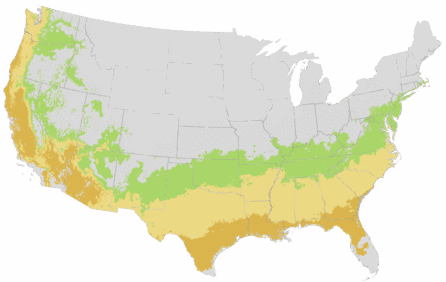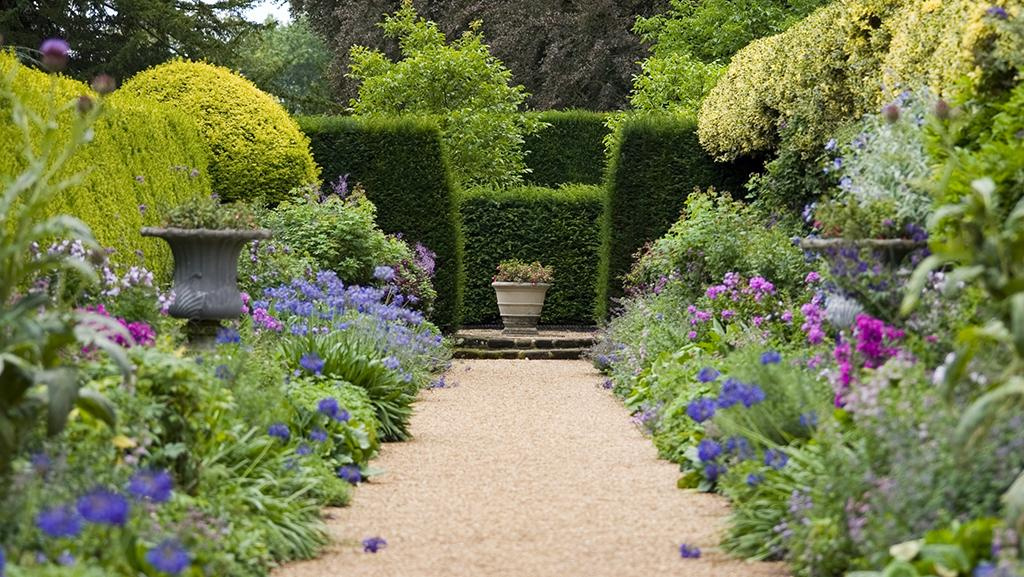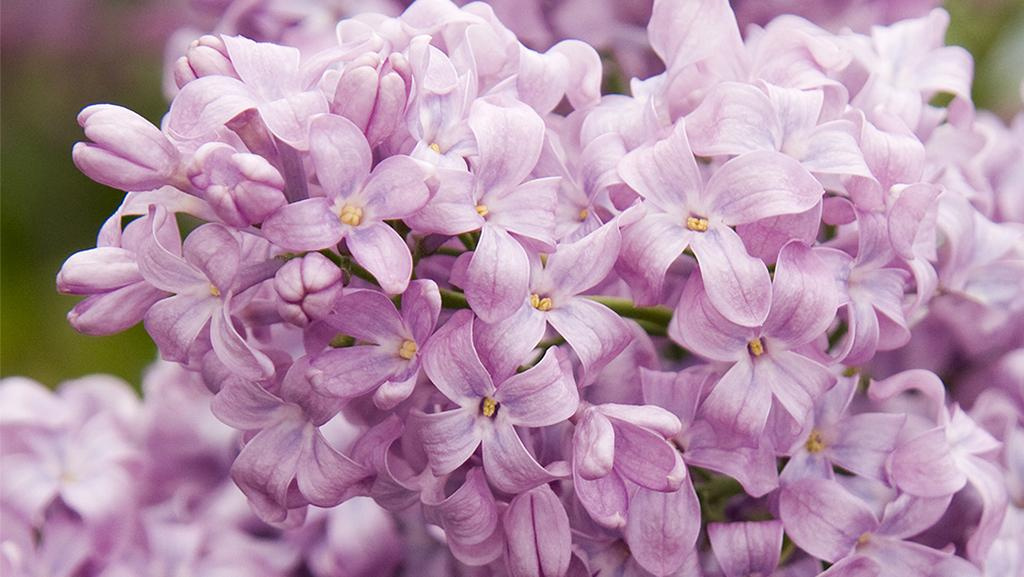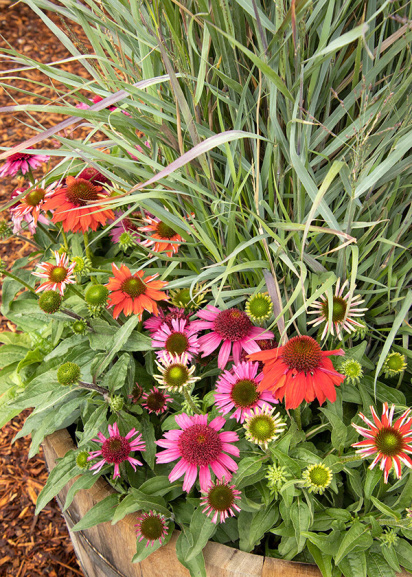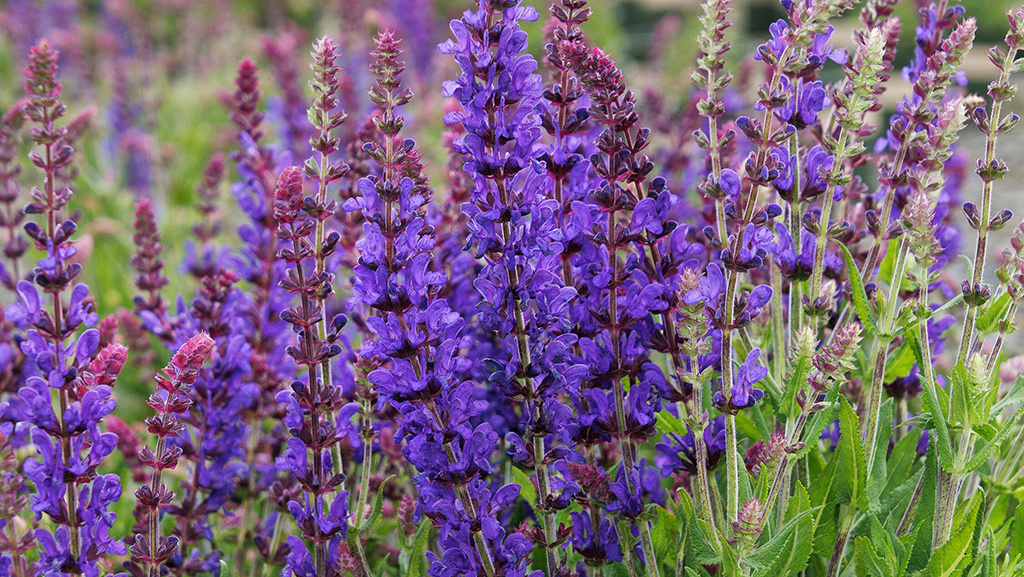You're growing in this Zip Code:
Change LocationDiscover Plants for Your Area
Javelin Forte™ Deep Purple Spanish Lavender
Lavandula stoechas 'LABZ0004' PP #27,493
Retailers Near You
| Description | A choice new early flowering variety with a profusion of larger purple summer flowers with deep purple bracts, and a robust, rounded, mounding habit of fragrant, gray-green foliage. Great carefree, heat and drought tolerant color and evergreen texture for sunny borders and containers. Tolerates cold, wet winter conditions better than most. Evergreen. |
|---|---|
| Bloom Time | Summer |
| Deciduous/Evergreen | Evergreen |
| Special Features | Attracts Butterflies, Easy Care, Waterwise, Attracts Pollinators |
| Problems/Solutions | Coastal Exposure, Deer Resistant, Rabbit Resistant, Drought Tolerant, Tolerates Urban Pollution |
| Growth Rate | Moderate |
| Flower Attributes | Flowers for Cutting, Fragrant, Long Bloom Season, Showy Flowers |
| Patent Act | Asexual reproduction of plants protected by the Plant Patent Act is prohibited during the life of the patent. |
| Landscape Use | Border, Container, Hillside |
| Design Ideas | A superior plant for Mediterranean climates treated as shrub or perennial. Preference for well drained soil makes a good candidate for hot, dry slopes and banks. Rugged enough for rock gardens in warm climates where it is likely to naturalize. Exceptional component of Mediterranean style gardens both formal and casual. With similar requirements as western natives, it is suitable for xeriscape or wild gardens in dry climates. Suited to traditional mixed borders with perennials and flowering shrubs. Performs in large artistic pots and particularly beautiful in classical style with antique finish. An indispensable component of herb gardens. |
| Flower Color | Purple |
| Foliage Color | Gray-green |
| Companion Plants | Black-Eyed Susan (Rudbeckia); Rose (Rosa); Coneflower (Echinacea); Rosemary (Rosmarinus); Shasta Daisy (Chrysanthemum); Fountain Grass (Pennisetum) |
| Care Instructions | Thrives in lean, loose, fast-draining, slightly alkaline soil with a gravel mulch. Plant with crowns slightly above soil level. Water regularly during first growing season to establish root system. Once established, reduce frequency; tolerates moderate drought. Prune lightly after flowering to promote next season's growth. |
| History | This newer variety of Lavandula stoechas from the Javelin Forte™ series, 'LABZ0004', originated from a breeding program in Enkhuizen, Netherlands, via a greenhouse pollination in 2008. It was observed for its prolific, sterile purple flowers with deep purple bracts, its strong, rounded mound of gray-green foliage, and its early-blooming and long bloom period, and was patented in the United States in 2016. |
| Lore | The lavenders have been grown in Europe long before Linnaeus's time and he named both this genus and species. Lavandula is derived from the Latin verb lavo or lavandus - to wash, because the Romans used it extensively in their ablutions and it was often used for fragrance in their famous baths. It has remained a widely cultivated crop for the oil that adds fragrance to perfumes and cosmetics. Many lavenders thrive in the arid West, but some varieties are best grown as annuals or container plants in the South, as they do not thrive in areas of high humidity, however Lavendula dentata and L. Stoechas are exceptions. Spanish lavenders are great for cut and dried flower arrangements. |
| Description | A choice new early flowering variety with a profusion of larger purple summer flowers with deep purple bracts, and a robust, rounded, mounding habit of fragrant, gray-green foliage. Great carefree, heat and drought tolerant color and evergreen texture for sunny borders and containers. Tolerates cold, wet winter conditions better than most. Evergreen. |
|---|---|
| Bloom Time | Summer |
| Deciduous/Evergreen | Evergreen |
| Special Features | Attracts Butterflies, Easy Care, Waterwise, Attracts Pollinators |
| Problems/Solutions | Coastal Exposure, Deer Resistant, Rabbit Resistant, Drought Tolerant, Tolerates Urban Pollution |
| Growth Rate | Moderate |
| Flower Attributes | Flowers for Cutting, Fragrant, Long Bloom Season, Showy Flowers |
| Patent Act | Asexual reproduction of plants protected by the Plant Patent Act is prohibited during the life of the patent. |
| Landscape Use | Border, Container, Hillside |
|---|---|
| Design Ideas | A superior plant for Mediterranean climates treated as shrub or perennial. Preference for well drained soil makes a good candidate for hot, dry slopes and banks. Rugged enough for rock gardens in warm climates where it is likely to naturalize. Exceptional component of Mediterranean style gardens both formal and casual. With similar requirements as western natives, it is suitable for xeriscape or wild gardens in dry climates. Suited to traditional mixed borders with perennials and flowering shrubs. Performs in large artistic pots and particularly beautiful in classical style with antique finish. An indispensable component of herb gardens. |
| Flower Color | Purple |
| Foliage Color | Gray-green |
| Companion Plants | Black-Eyed Susan (Rudbeckia); Rose (Rosa); Coneflower (Echinacea); Rosemary (Rosmarinus); Shasta Daisy (Chrysanthemum); Fountain Grass (Pennisetum) |
| Care Instructions | Thrives in lean, loose, fast-draining, slightly alkaline soil with a gravel mulch. Plant with crowns slightly above soil level. Water regularly during first growing season to establish root system. Once established, reduce frequency; tolerates moderate drought. Prune lightly after flowering to promote next season's growth. |
|---|
| History | This newer variety of Lavandula stoechas from the Javelin Forte™ series, 'LABZ0004', originated from a breeding program in Enkhuizen, Netherlands, via a greenhouse pollination in 2008. It was observed for its prolific, sterile purple flowers with deep purple bracts, its strong, rounded mound of gray-green foliage, and its early-blooming and long bloom period, and was patented in the United States in 2016. |
|---|---|
| Lore | The lavenders have been grown in Europe long before Linnaeus's time and he named both this genus and species. Lavandula is derived from the Latin verb lavo or lavandus - to wash, because the Romans used it extensively in their ablutions and it was often used for fragrance in their famous baths. It has remained a widely cultivated crop for the oil that adds fragrance to perfumes and cosmetics. Many lavenders thrive in the arid West, but some varieties are best grown as annuals or container plants in the South, as they do not thrive in areas of high humidity, however Lavendula dentata and L. Stoechas are exceptions. Spanish lavenders are great for cut and dried flower arrangements. |
Retailers Near You
About Us
We have been pioneers and craftsmen in the art of growing plants for nearly
100 years. Since our founding in Southern California by Harry E. Rosedale, Sr.
in 1926, we have been absolutely dedicated and obsessed with quality.
We have been pioneers and craftsmen in the art of growing plants for nearly 100 years. Since our founding in Southern California by Harry E. Rosedale, Sr. in 1926, we have been absolutely dedicated and obsessed with quality.




